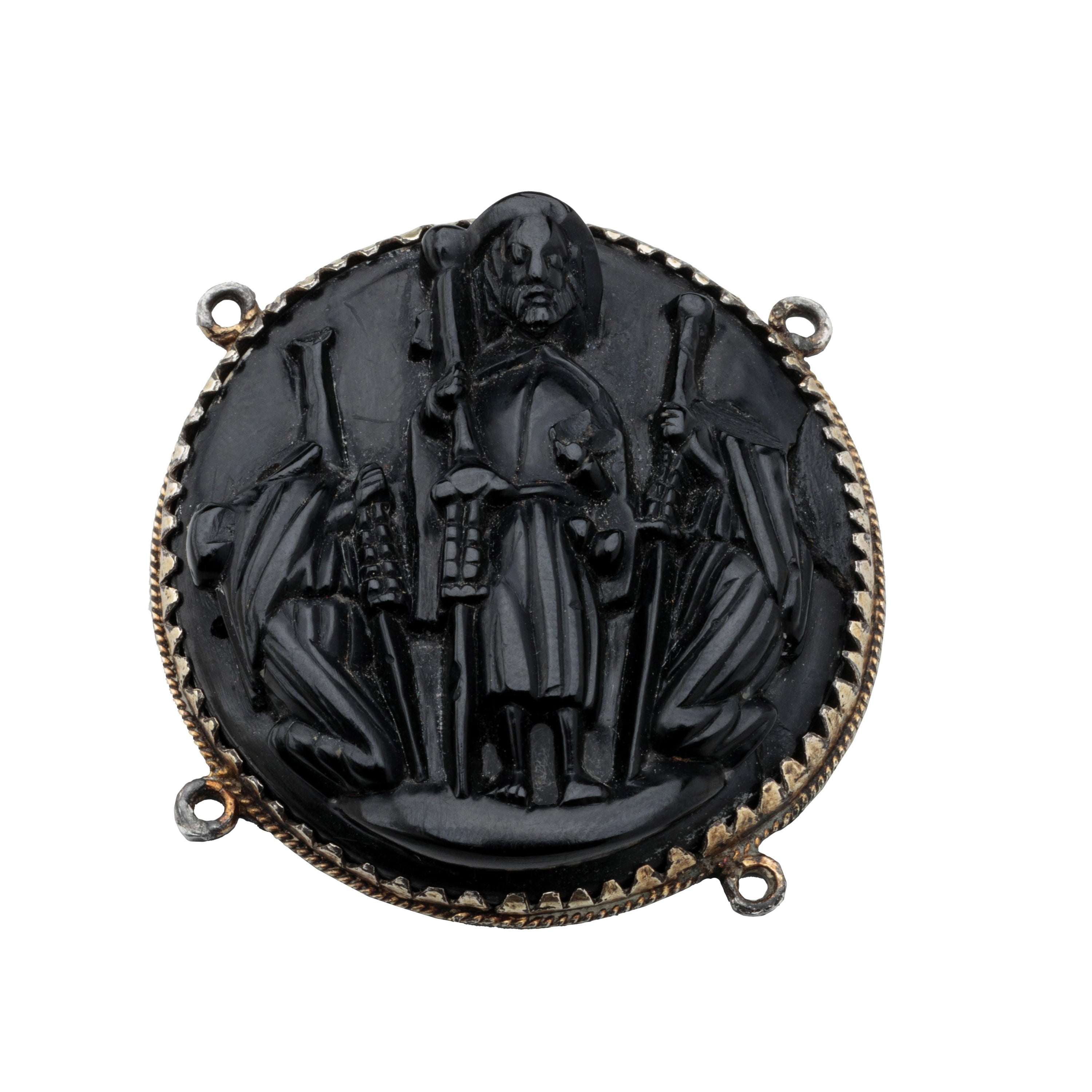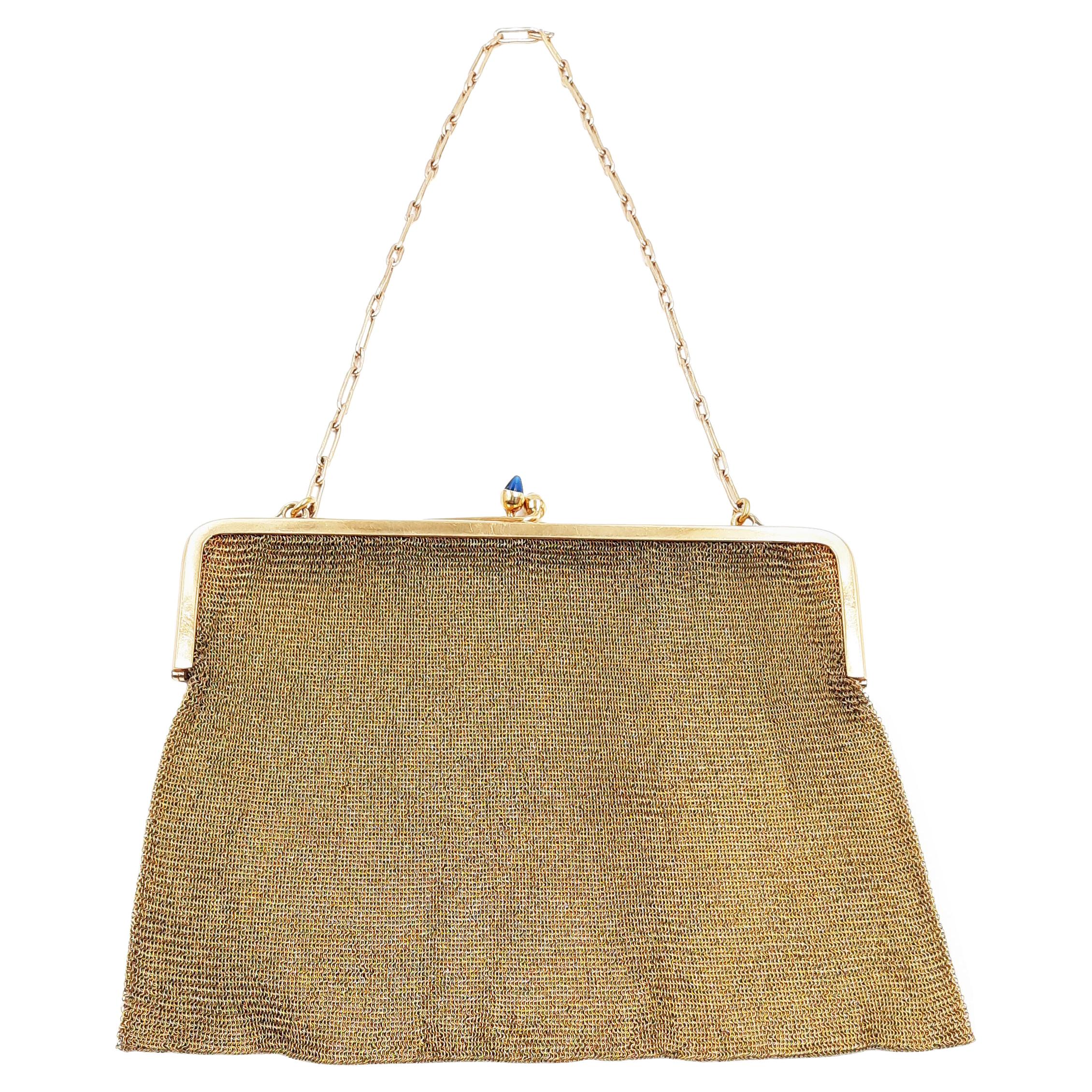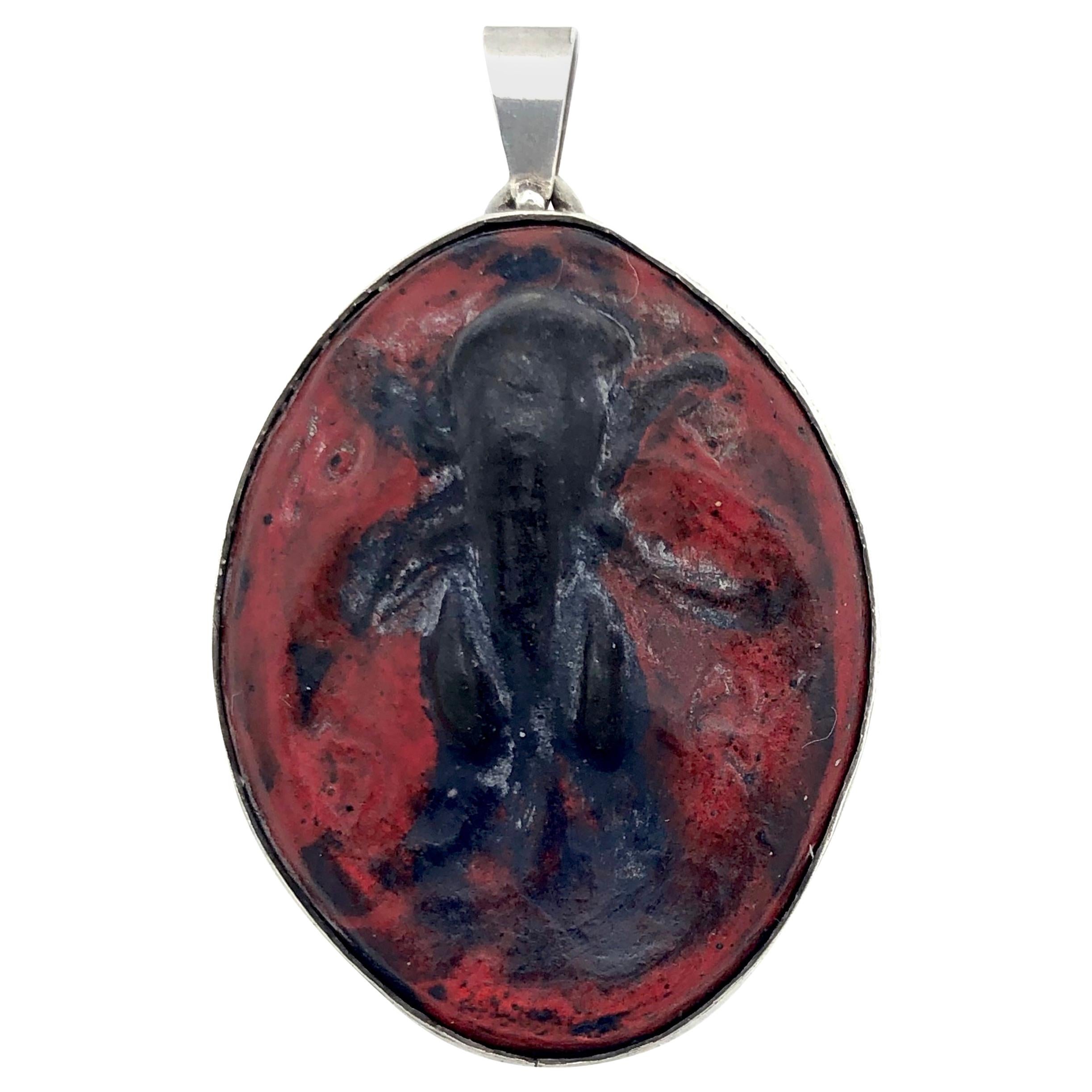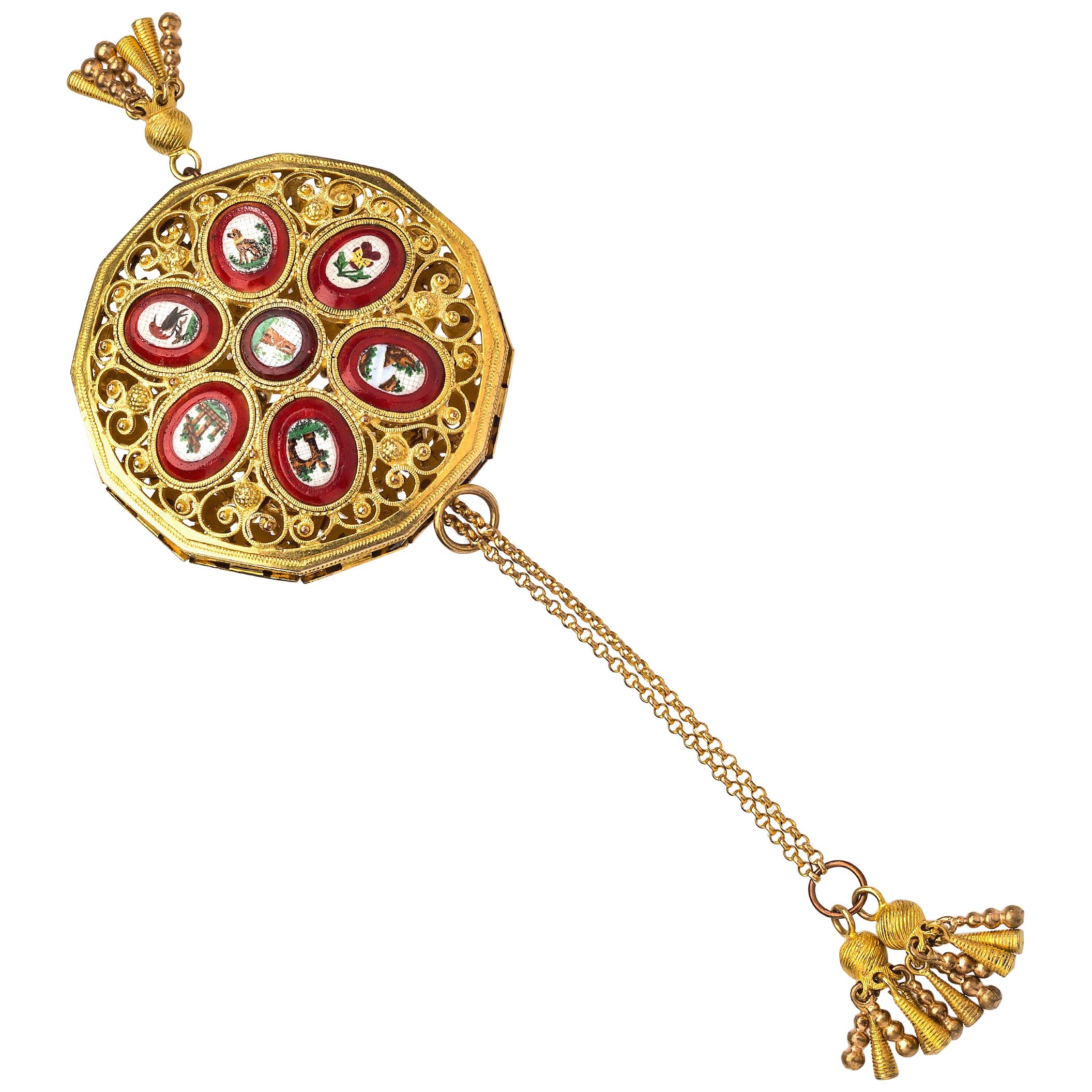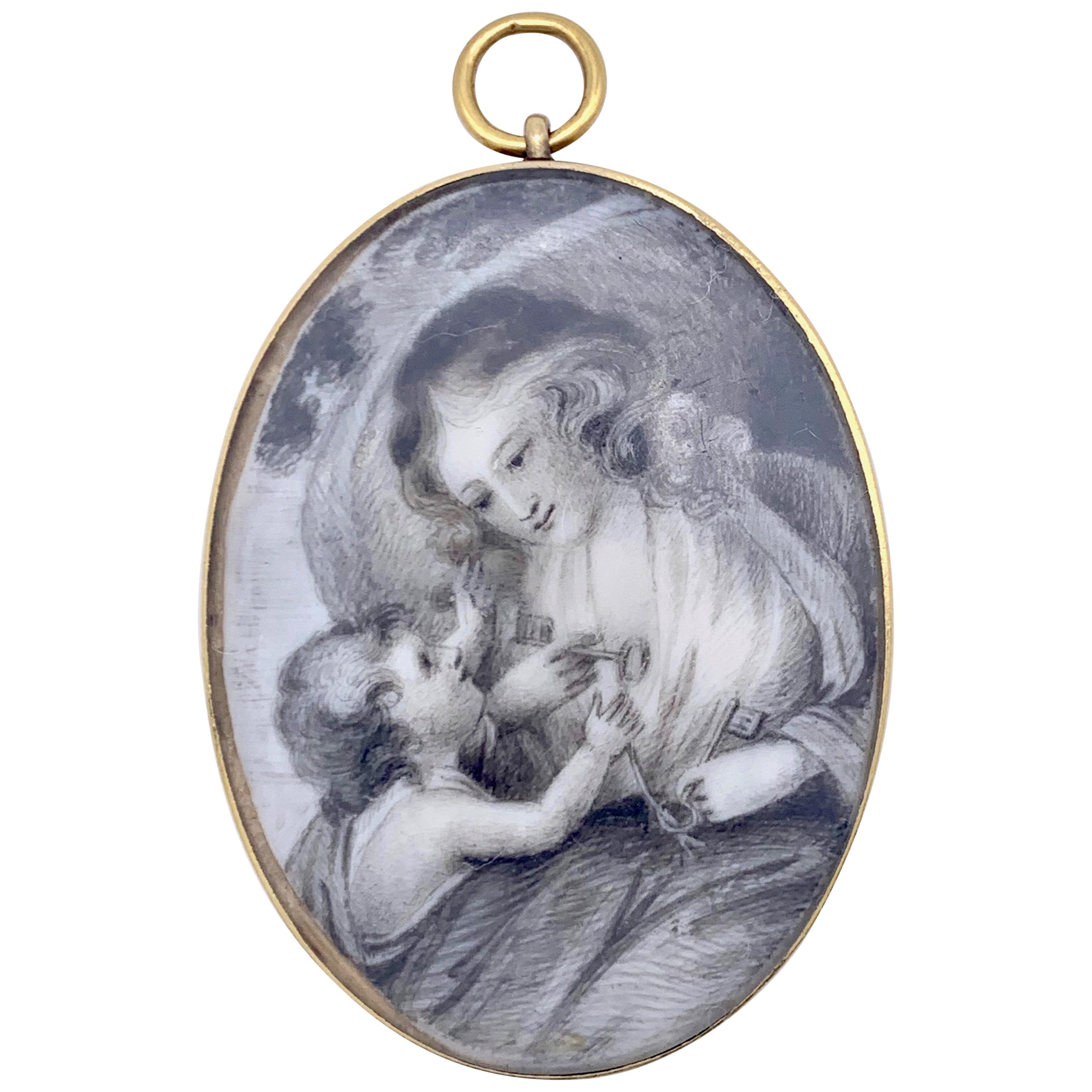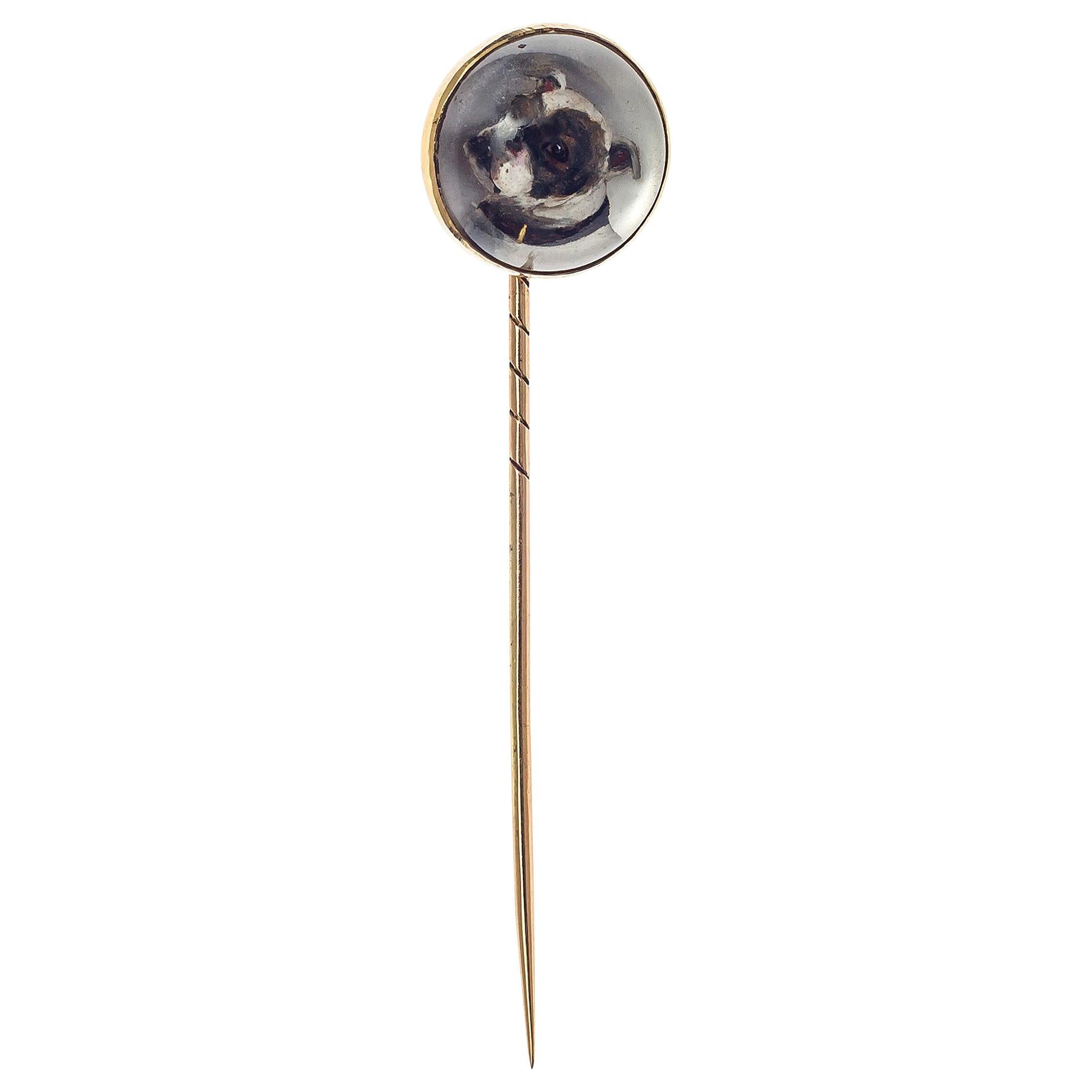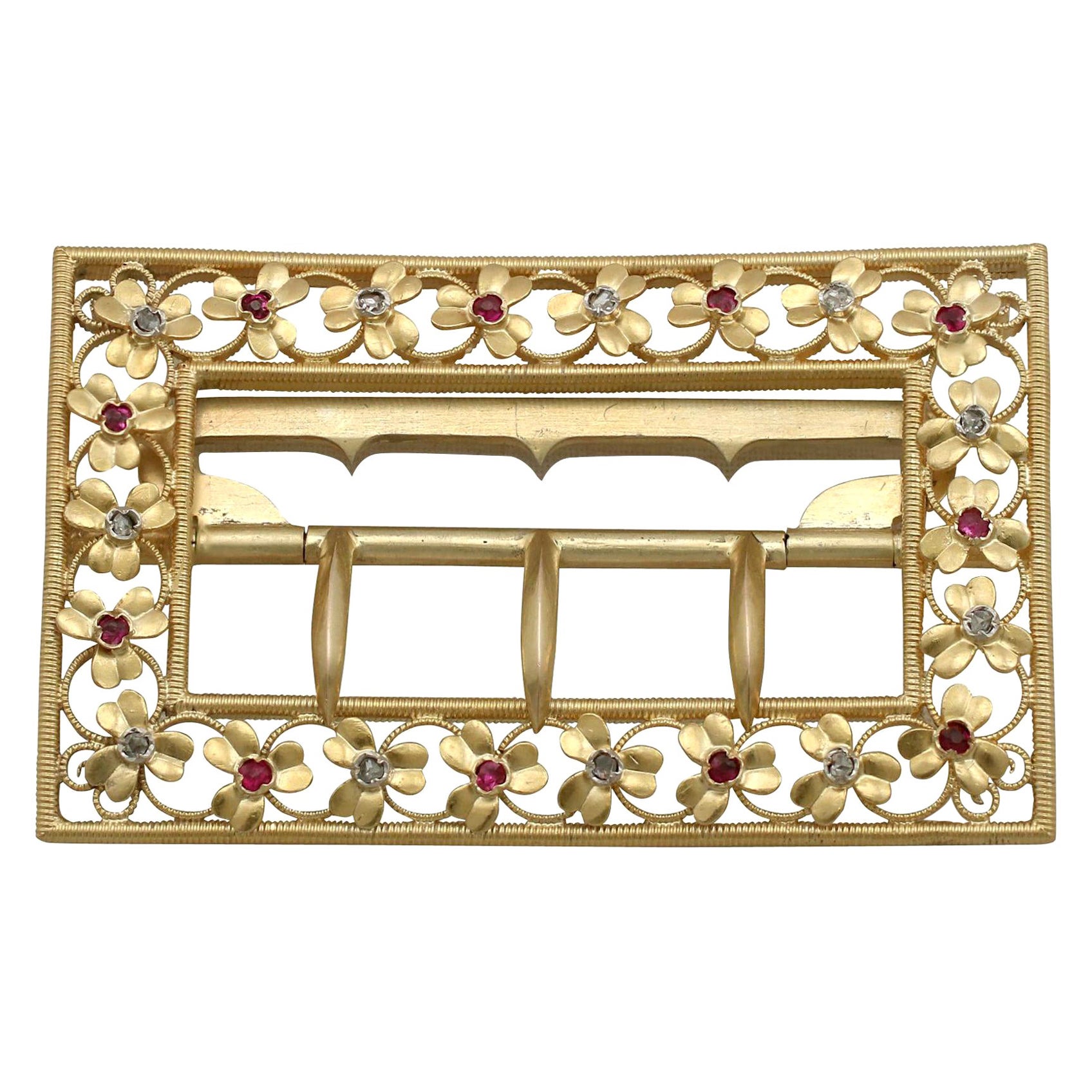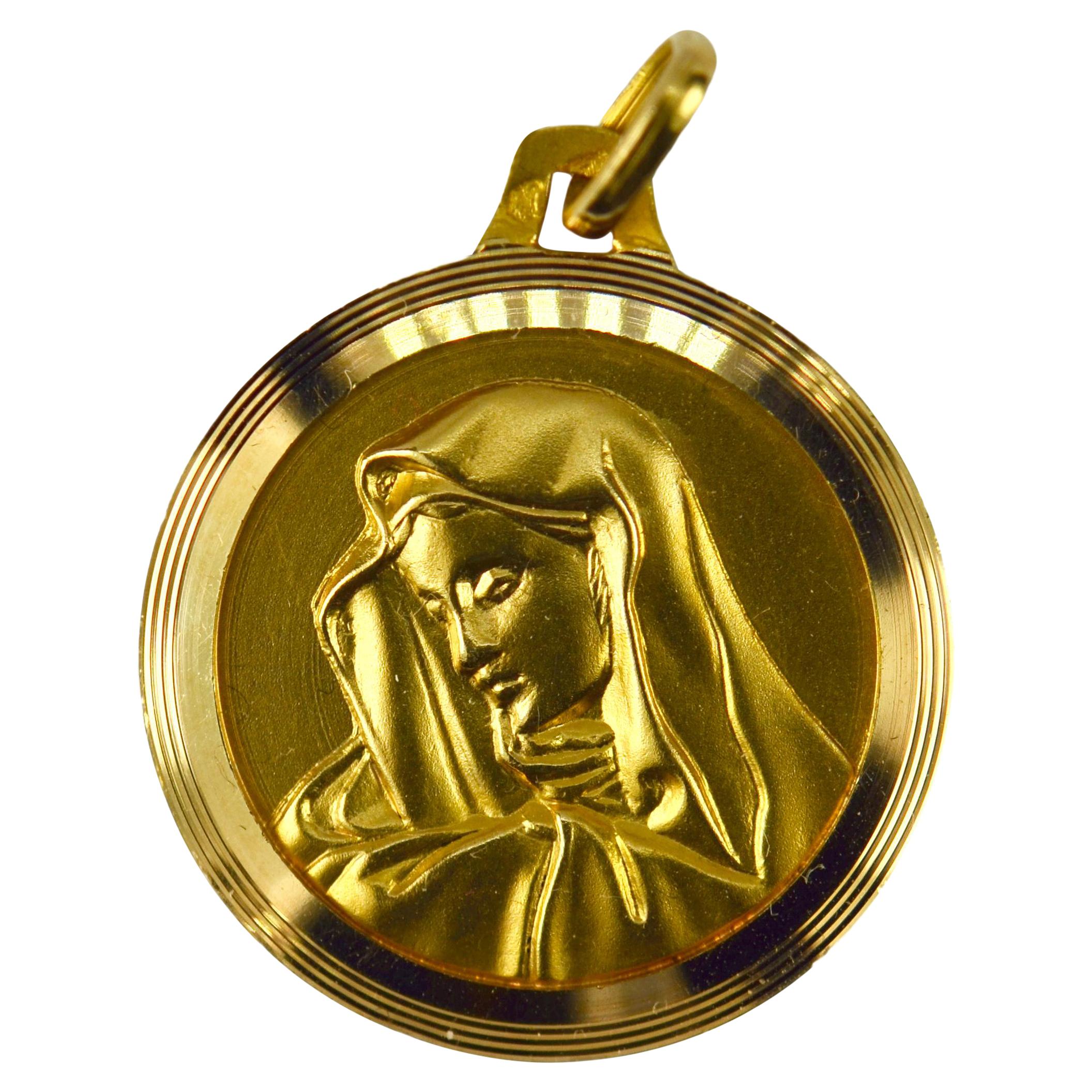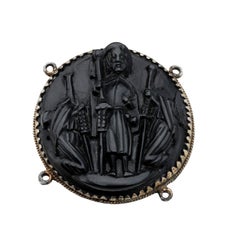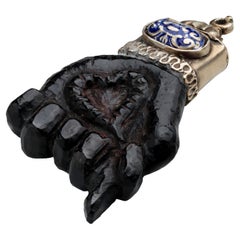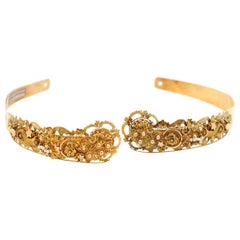
Antique Gold Spanish Pendant with the Virgin of the Immaculate Conception
View Similar Items
Video Loading
Want more images or videos?
Request additional images or videos from the seller
1 of 6
Antique Gold Spanish Pendant with the Virgin of the Immaculate Conception
About the Item
- Metal:
- Weight:35 g
- Dimensions:Width: 2.25 in (57 mm)Depth: 0.12 in (3 mm)Length: 2.92 in (74 mm)
- Style:
- Place of Origin:
- Period:Early 17th Century
- Date of Manufacture:c. 1630
- Condition:Wear consistent with age and use.
- Seller Location:Chicago, IL
- Reference Number:Seller: J-350121stDibs: LU2334213262752
About the Seller
5.0
Vetted Seller
These experienced sellers undergo a comprehensive evaluation by our team of in-house experts.
Established in 1991
1stDibs seller since 2021
5 sales on 1stDibs
Typical response time: 16 hours
More From This SellerView All
- Antique Spanish Hat Badge Pendant Carved in JetLocated in Chicago, ILBADGE WITH ST. JAMES THE GREAT Northern Spain, 16th century Silver, jet Weight 18.2 grams; dimensions 44 × 43 × 12 mm Round pendant with high-relief image of St. James the Great of Santiago de Compostela carved in jet. The saint is flanked by two pilgrims (their heads defaced); each holds a staff and rosary in his hand. Silver mount with plain flat backplate, corded wire surround and toothed edge as setting. Four pendant loops for sewing onto a hat or cloak. According to the Roman naturalist Pliny, jet, the material of which this pin was made, prevented snakebite and was “thrown up by the sea.” The first quality would certainly have been reassuring for a pilgrim who owned this object and who had to make long journeys over unfamiliar terrain. The second quality made jet an especially fitting material to honor St. James, given that his body arrived in Spain mysteriously, carried there “by the sea” from the Holy Land. Santiago de Compostela was a major center for jet carving from the late Middle Ages, and highly polished jet was a desirable and common material for pilgrimage souvenirs. One even finds scallop shells, the pilgrim’s badge...Category
Antique 16th Century Spanish More Objets d'Art and Vertu
MaterialsSilver
- Renaissance Reliquary Pendant with Pearl and EnamelingLocated in Chicago, ILRELIQUARY PENDANT WITH PEARL Spain or Spanish Netherlands, c. 1620 Gold, rock crystal, enamel, pearl, bone relics Weight 12.9 grams; dimensions 40 ...Category
Antique 1620s Spanish Renaissance Pendant Necklaces
MaterialsPearl, Gold, Enamel
- Antique Spanish Jet Amulet Pendant with FigaLocated in Chicago, ILAMULET PENDANT WITH FIGA Spain, c. 1620–1630 Jet, silver, and enamel Weight 60.7 grams; dimensions 85 × 49 × 18 mm Large pendant in the shape of a hand carved from jet with a clinched fist in the figa (Spanish higa) gesture. In the palm of the hand is a heart carved in relief and on the back a six-ray star in a circle. The silver mount covers the wrist like a cuff and is decorated with a frilled border, and on the front with collet-set bosses with silver C-scrolls against blue enamel; on the back is a roundel in relief with floral motif. Domed base for the pendant loop in pea-pod form. The figa (also fica or higa) represents an age-old symbol of protection against the evil eye and other demonic threats. Its origins were pagan and buried deep in antiquity. Roman examples, such as one found recently in an archeological excavation in London, also make it clear that the protective qualities are based in a sexual symbolism–particularly the power of the phallus. The Roman bone figa/phallus in effect represents the phallus twice; that is, the gesture made by the figa hand is generally explained as fingers representing the female genitalia (vulva) penetrated by the phallus of the thumb. But other interpretations are less specific, including explanations that the left hand is the feminine principle, and the right hand is the masculine. In Spain, jet figa are common; we see one in the portrait of Anne of Austria the infanta (p. 75). That is not to say that the objects are not sumptuous or treasured. Jet was a very valuable material, and in many examples like this one, the figa is embellished with beautiful enameling or is even gem-studded. Comparable objects occur in equally sumptuous materials such as rock crystal. The enameled setting allows a dating of these objects that otherwise might prove difficult, given that the production of such objects in Spain is so consistent over centuries. Indeed, there is another, even more elaborately carved example in this collection, attached to the “magic belt” (no. 9). That example may belong to an earlier group. That figa includes deeply excavated carving, including on the upper surface, an M-shaped design that Walter Leo Hildburgh links to the heart shape (as it occurs more explicitly on this example). Hildburgh argues that its presence is especially common on these objects and that it originally represented the Sacred Heart of Mary...Category
Antique Early 17th Century Spanish Pendant Necklaces
MaterialsSilver
- Late Renaissance Octagonal Gilded Brass Reliquary Pendant with Velvet InteriorLocated in Chicago, ILOCTAGONAL RELIQUARY PENDANT Probably Italy, c. 1600 Fire-gilded brass, glass, velvet, ink on paper Weight 63.2 grams; dimensions 82 × 47 × 21 mm (with loop) Physical description: Double-sided pendant in octagonal form made of fire-gilded brass. Both sides of the pendant with deep profiled frames with glass. The slightly indented side panels comprise openwork friezes with symmetrical scrollwork. On the front is dark red velvet, onto which tiny bone relics of saints (now missing) would have been attached. Labels on a lace-like paper silhouette remain, with names written in ink, mostly faded; only “S. Agnes” is legible. The back is hinged and when opened reveals a velvet-lined interior and paper insert with floral decorations on a turquoise ground, on which fragments of bones are attached. Baluster shaped base for shield-like pendant loop and ring. This reliquary pendant is difficult to situate historically because it is a composite object. It represents traditional handwork in the form of a paper cutout, combined with a jeweler’s beautiful fire-gilt brass case. The work of paper cutting, painting, and ornamentation, sometime combined with needlework, is comparable to work still being done in the nineteenth century by nuns and pious ladies. It is prayerful work, a devotional exercise in itself, and shows reverence to the tiny relic fragments that it would have framed and honored. Early versions of this sort of handiwork might be found in the meticulous displays sometimes called “Paradise Gardens.” These were made, beginning in the sixteenth century, by the nuns at Mechelen, in northern Belgium, in multimedia handwork displays of sewing and gluing, combining relics with paper, cloth, glass, metal wire, and found materials. These textured and pious displays were then combined with paintings and cases by professional artists and artisans, as in the example in Cassel. Unfortunately, because of water damage, only one of the labels of the original relic displayed in this reliquary is legible, inscribed “S. Agnes” at the center top; the other names are faded. Presumably the deep velvet-lined box would have also held an assortment of relics other than the ones that were visible through the glass, and perhaps there would have been another display in the glass on the other side of the pendant. There is a second paper insert, this one decorated with a turquoise ground and silhouette flowers to which bone fragments seem to be still attached. The octagonal case, in contrast to the paper cutout, is not at all “home-made.” It has an openwork frieze in scrollwork patterns familiar from enamel work and other metalwork done for European courts and nobility. It is not unlike cases for expensive watches...Category
Antique Early 1600s Italian Pendant Necklaces
MaterialsBrass
- Antique Silver Spanish Cross Pendant with Rock CrystalsLocated in Chicago, ILCross Pendant with Rock Crystals Spain or Portugal, late 17th - early 18th century Silver, gold, rock crystal Weight 9.1 gr.; Dimensions 56.3 × 38.8 mm. An elaborate and elegant cross pendant made of silver with rock crystals in closed settings. The center consists of a larger round gemstone surrounded by five irregular-shaped stones forming the cross. The openwork arms have a triangular shape and are formed of facetted rock-crystals in foliate settings. The obverse side of the cross consists of a layer of gold. An extension with two stones and an angular shaped frame is hooked into the pendant loop, probably to be worn on a velvet band. The pendant is in good, wearable condition. After the Reformation, cross pendants were worn mainly in Catholic countries by men, women, and children. During the seventeenth century, the designs became ever more intricate, and the crosses were often embellished with gemstones, such as rock crystals in this example. These were sourced along the Alpine regions of France, Switzerland, Austria, and Southern Germany. The stones gave the appearance of diamonds. The foliate settings are characteristic of late seventeenth- and eighteenth-century jewelry made in Spain...Category
Antique Late 17th Century Pendant Necklaces
MaterialsCrystal, Rock Crystal, Gold, Gold Plate, Silver
- Antique Eastern European Silver Cross PendantLocated in Chicago, ILRELIQUARY CROSS PENDANT Balkans (probably Bulgaria), 18th-19th century Gilded silver, glass pastes Weight 40.7 grams; dimensions 74 × 15 × 10 mm Double-sided pendant made of gilded silver filigree in the shape of a Greek cross, with pendant loop. The front and side panels composed of intricate filigree scrolls, globules, and a central rosette. Interspersed are crimped collet settings with corded wire base and red, blue, and green glass-paste gem...Category
Antique 18th Century More Jewelry
MaterialsSilver, Gilt Metal
You May Also Like
- 1900 Antique 18 Carats Gold Mesh Handbag with Gold Chain Blue StonesLocated in Marcianise, CE, ITAntique, Italian 18 carats gold mesh handbag with chain. Ideal for a gala event. With blue stones. No hallmarks or stamps, but tested as gold. Circa ...Category
Antique Early 19th Century Italian Art Nouveau More Jewelry
MaterialsGold, 18k Gold, Yellow Gold
- Antique 14 Karat Gold 'Horn of Plenty' Forehead NeedlesLocated in Rotterdam, NLThese antique forehead needles are one-of-a-kind Dutch 19th century pieces of jewelry. Adorned with filigree, cannetille and seed pearls. The scene...Category
Antique Late 19th Century Dutch Victorian More Jewelry
MaterialsPearl, 14k Gold, Yellow Gold, Gold
- Antique Art Nouveau Almeric Walter Antique Pâte De Verre Silver Pendant, FranceLocated in Munich, BavariaPâte de Verre octopus mounted in silver signed ALW (Almeric Walter),NancyCategory
Vintage 1910s French Art Nouveau More Jewelry
MaterialsSilver
- Antique 10K Yellow Gold Belt Buckle, NetherlandsLocated in Rotterdam, NLThis antique 19th century filigree belt buckle is made of 10 karat yellow gold. The rectangular-shaped buckle is embellished with filigree knots a...Category
Antique Late 19th Century Dutch Victorian More Jewelry
Materials10k Gold, Copper, Gold
- Antique Purse Micromosaic Painting Gilt Metal Gold, FranceLocated in Munich, BavariaThis unique and extremely rare antique purse is made out of fire guilt metal. The pouch is decorated with six oval and one round painting on glas imitating roman micro...Category
Antique 19th Century French Empire More Objets d'Art and Vertu
Materials18k Gold, Gilt Metal
- Antique 18 Karat Yellow Gold Knitting Needle CapsLocated in Rotterdam, NLThese rare antique needle caps made of 18 karat yellow gold. The needle caps are connected with each other through a belcher chain and hook. These caps were used for knitting tools a...Category
Antique Late 19th Century Dutch Victorian More Jewelry
MaterialsGold, 18k Gold, Yellow Gold
Recently Viewed
View AllMore Ways To Browse
Spanish Cherub
Antique Brass Cat
17th Century Pendants Jewellery
Original Medieval Jewellery
Paste Gem
Antique Franciscan
17th Century Jewellery Box
Immaculate Mary
Lady With Cherubs
Antique Glass Santa
Gold Badge
Moon And Stars Glass
Antique Religious Medallions
Reverse Crescent
Enamel Cherub Jewelry
Antique Crescent Moon Pendant
Inlaid 17th C
P Monogram Jewelry
